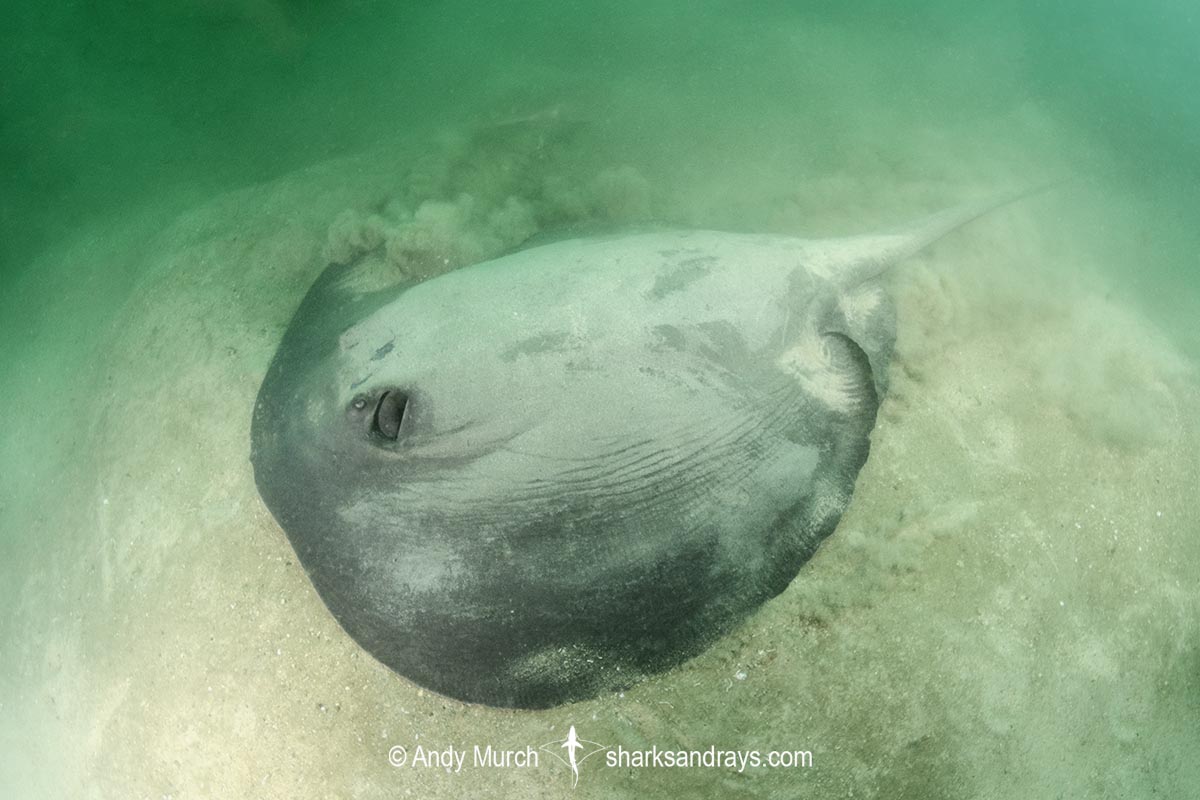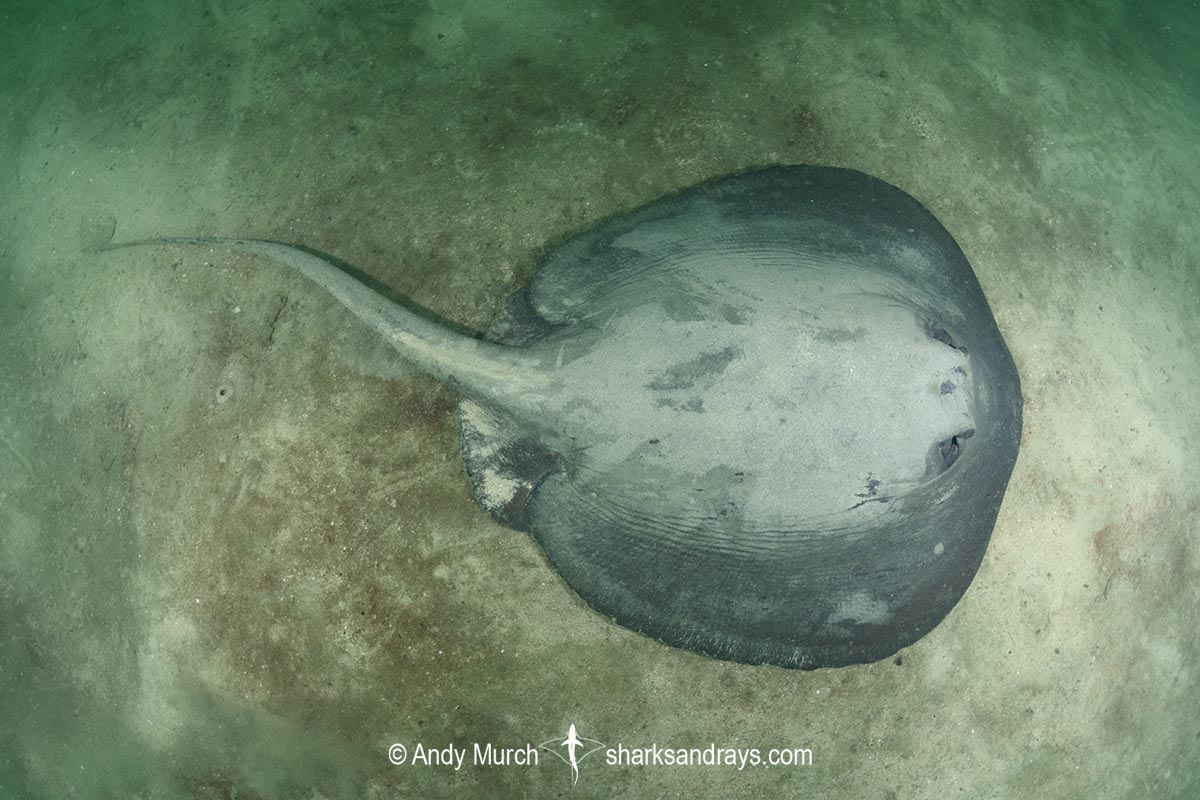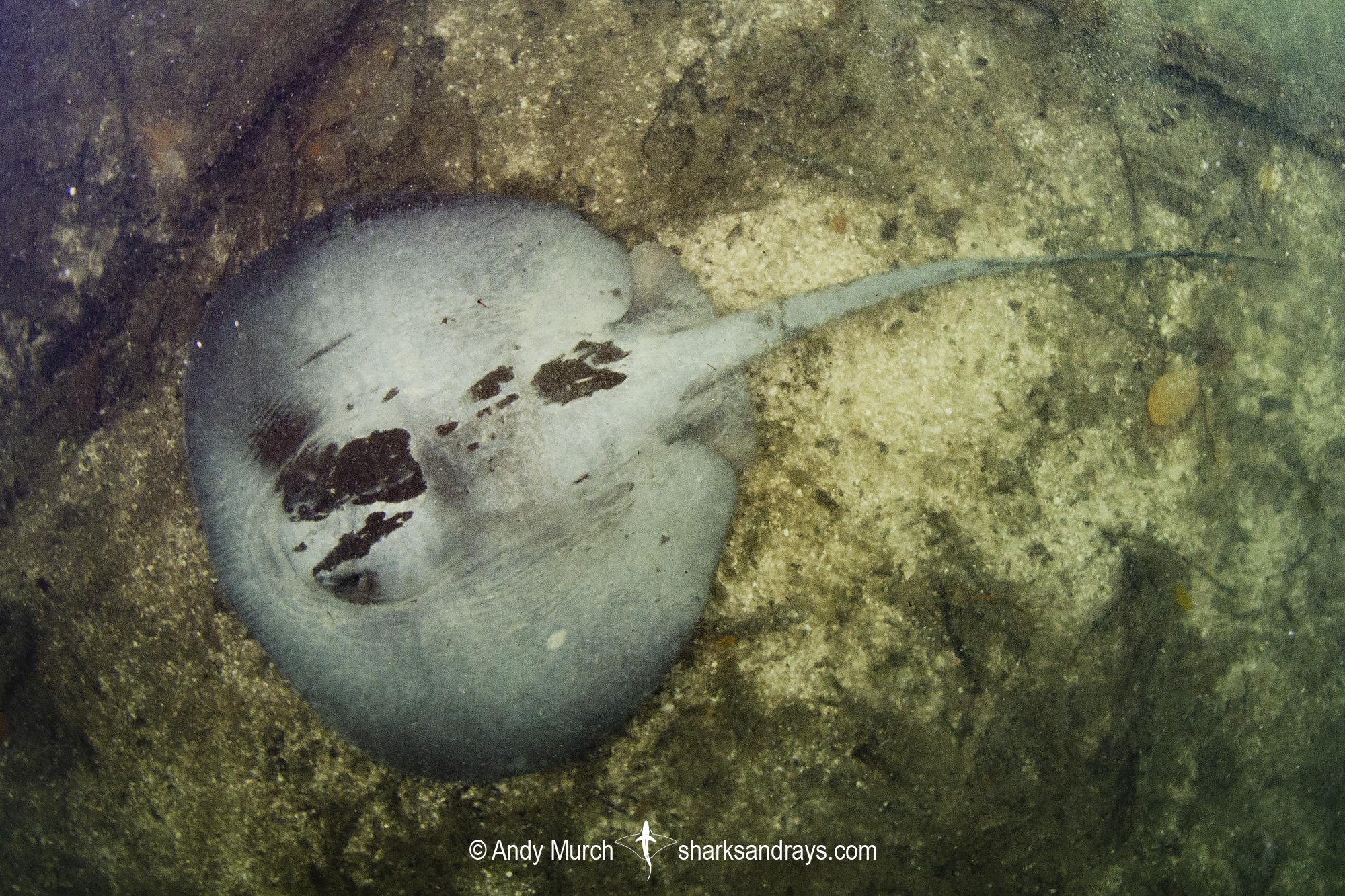Common name(s)
Pacific Chupare Stingray, Pacific Whiptail Stingray.
Identification
A medium sized stingray with a sub-circular disc that is slightly wider than long. Small lobe present on tip of snout. Anterior margins of disc almost straight, apices broadly rounded. Head broad. Eyes slightly protruding. Spiracles large and rhomboidal, positioned obliquely. Nasal curtain broad, wider posteriorly, with a fringed posterior margin. Mouth with 5 oral papillae. Labial furrows short.
Disc with evenly distributed, large denticles. Denticles on midline and shoulders with 4 basal rays; quadriradiate. A large pearl-shaped thorn is sometimes present on each shoulder. Thorns on tip of tail small and sharp. Pelvic fin posterior margins protrude beyond disc. Tail long, broad based, tapering gently to dorsal spine, then whiplike to tip. Tail with distinct lateral ridges and a low ventral finfold near base. Caudal sting long and slender, origin slightly posterior of mid tail.
Colour
Dorsum dark brown without markings. Disc darker towards disc margins, pelvic fins, and tail. Ventrum creamy-white with dark margins. Tail dark ventrally.
Size
Maximum disc width recorded at 89cm but likely grows much larger.
Habitat
Tropical to subtemperate inshore environments; mangroves, lagoons, and estuaries as well as sandy slopes and bays.
Distribution
Tropical/subtemperate Eastern Pacific. From Oaxaca in Mexico to Colombia. Also recorded in the Galapagos Islands.
Conservation Status
VULNERABLE
The Pacific Chupare (Styracura pacifica) is captured in small-scale gillnet and longline fisheries and in large-scale and small-scale shrimp trawl fisheries, which are intense and unmanaged throughout much of its range, and there is no refuge at depth. Catches in general are at low levels and it is either retained for local consumption or discarded dead. There are no population trend estimates but due to its high catchability and suspected limited biological productivity, it is unable to sustain the high levels of fishing pressure to which it is subjected. The tropical Eastern Pacific is subject to very high levels of mangrove clearing for coastal development and aquaculture (e.g. 68% mangrove loss in Panama; 57% in Colombia). The species may have some refuge in the Galápagos Islands Marine Reserve, although illegal fishing is an ongoing issue there. Overall, it is suspected that the Pacific Chupare has undergone a population reduction of 30–49% over the last three generations (45 years) based on a decline in habitat quality and levels of exploitation, and it is assessed as Vulnerable A2cd.
Citation
Kyne, P.M., Charvet, P., Areano, E.M., Avalos, C., Cevallos, A., Espinoza, M., González, A., Herman, K., Mejía-Falla, P.A., Morales-Saldaña, J.M. & Navia, A.F. 2020. Styracura pacifica. The IUCN Red List of Threatened Species 2020: e.T144163683A144164959. https://dx.doi.org/10.2305/IUCN.UK.2020-3.RLTS.T144163683A144164959.en. Accessed on 06 February 2022.
Reproduction
Viviparous. Litter size unknown.
Diet
Diet unknown. I have watched a Pacific chupare ray excavating a large depression on a sandy slope at 21m, inferring that this species feeds on sessile invertebrates.
Behavior
Poorly known. Utilizes estuaries and mangroves as nursery areas.
In Guanacaste, Costa Rica, I encountered two Chupare rays in close proximity to each other at 21m; one was feeding.
Reaction to divers
Relatively easy to approach. The only time I encountered this species, it moved away but swam slow enough for me to take a series of images before it outpaced me.
Diving logistics
The Pacific chupare stingray is rarely encountered. I found two animals together on a sandy slope near Ocotal in Costa Rica. On subsequent dives in the same area, I did not see any other Chupares but I found large feeding depressions that matched the one created by the ray I encountered. So, perhaps this is a fairly worthwhile spot to look for them.
They are known to inhabit shallow mangroves but access and poor visibility, make this a difficult place to look for them.
What’s new
View our full list of updates
Similar species
Atlantic Chupare Stingray Distinguished by potentially larger size, more rounded snout, double thorns on each shoulder, and geographic range; confined to the western Atlantic.








